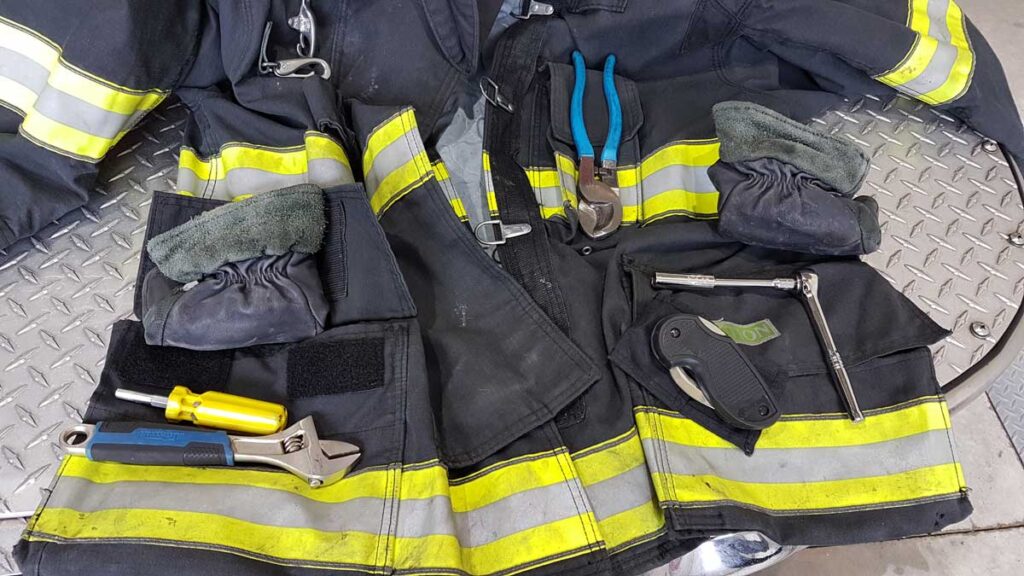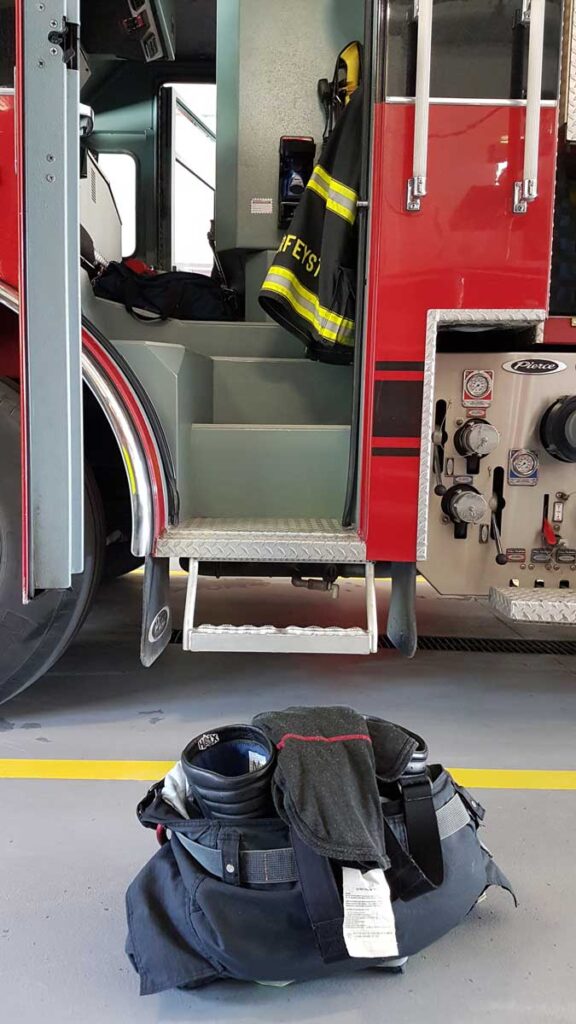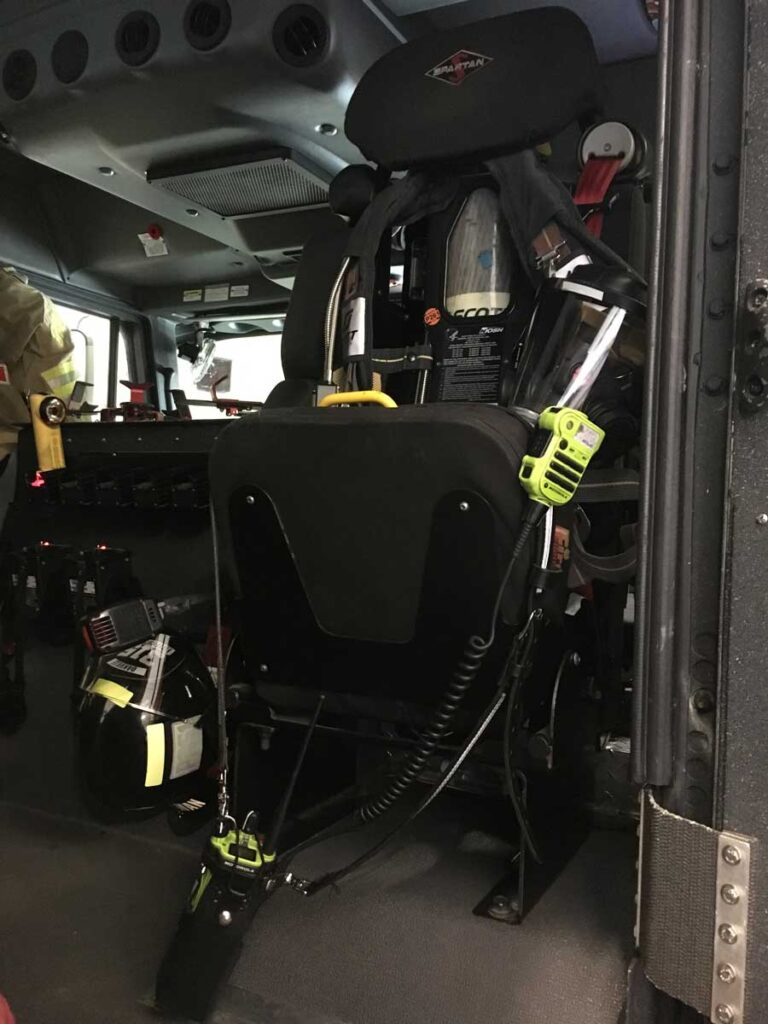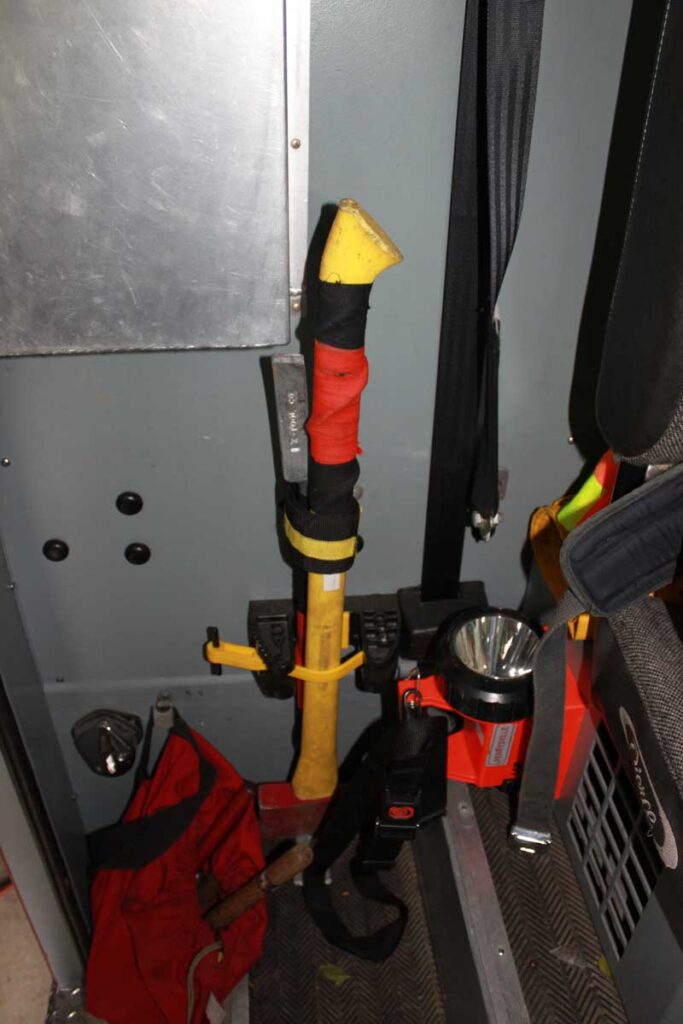The moniker “tactical firefighter” is not just reserved for one specific area of the fire service—it is applied and is applicable to all aspects of our operations on the fireground and in the station. The station is where we prepare ourselves for the operations side of the business by prepping equipment, trucks, gear, attitudes, approaches to certain situations, tactical objectives, training, and so forth. All of this is done with the hope that when the time comes to respond to any type of call, the individual, the crew, and the department are prepared to meet the challenge with confidence and certainty.
As the name denotes, the tactical firefighter refers to an individual, and it is up to the individual to want to become a tactical firefighter. This will require individuals to conduct a self-audit to determine what areas of their skill level, training, knowledge, attitude, and experience needs to be improved upon so as to become effective and efficient in their actions and work production.
The two key words that must be focused upon are “effective and efficient.” This is where the tactical firefighter will improve the overall scope of operations on the fireground. With everything that needs to be accomplished on the fireground as a task, the tactical firefighter will approach it in a way to be effective and efficient.
One of the key things that a tactical firefighter must do is to never stop learning. This is going to involve professional development by way of seeking out courses that can be attended locally or nationally. This will also involve reading periodicals, magazine articles, Web stories, NIOSH reports, fire research reports, and other books that are related to firefighting. It may furthermore involve pursuing secondary education, including obtaining associate, bachelor’s, and master’s degrees, or even beyond.
With respect to self-education, there is a saying that I like to use: “Do not wait to be spoon-fed, feed yourself.” Fire departments as a whole will provide the minimum training necessary for each member due to time and cost to conduct it. If firefighters wait until the fire department provides them with the training and education that is above the minimum, they will be waiting for a very long time. Newborns are spoon-fed by their parents until they are able to feed themselves. As children grow, they continue to feed themselves, now being able to make their own food prior to eating it. This same analogy must be applied to the tactical firefighter – these members need to feed themselves to grow and become effective and efficient on the fireground.
Another area for never stop learning is with their community or response district. This is a part of a continuous size-up, taking stock of what is going on with new construction, renovation projects, demolishing projects, demographic changes, what the make-up of the community is, etc. This information will assist firefighters in doing their job daily by knowing what is going on in their backyard.
To be effective and efficient, the tactical firefighter needs to be prepared. This involves three areas: physically, mentally, and emotionally. The tactical firefighter will be prepared physically to do the job on the fireground so as to perform at their best. This will involve a commitment to some sort of fitness regiment along with good eating habits to accompany it. Whether you are career, volunteer, or a part-time firefighter, that physical commitment is career long. The public is owed the best in response and that starts with you as the firefighter being physically ready.
The mental preparation will involve the head space or brain, and you need to be in the right place when going to work. Firefighters are people who face issues at home, work, or with other family members, and it can sometimes affect their head space. Members may become distracted from the job, and that means they are not focused on what they need to do for that time frame. This can be dangerous as distractions can sometimes lead to oversights or short cuts or a lack of situational awareness. It can lead to people getting hurt, both ourselves, and, worse, other people.
Emotional preparation ties in with the mental preparation in that the heart needs to be in the job. Tactical firefighters’ hearts are in the right place, driving them to do their job right all the time, driving them to succeed in everything that they do. When this drive is lost, a member will wither away and not be effective or efficient.
Another way to be a tactical firefighter is with the equipment on the trucks. All the equipment on the truck needs to be in good working condition. This will require the firefighter to ensure that each piece of equipment is ready to go for service when needed. Checking each piece, filling with fuel, cleaning it, and repairing it are all part of this process. If there is a piece of equipment that is broken and needs to be fixed, take it out of service for repair–do not let it sit there broken for someone else to deal with. The tactical firefighter is someone who gets things fixed as needed.
The tactical firefighter will also prepare equipment so that it is in a readied state. This will involve having the switches to the “on” position, having the choke pulled out and ready for starting, decompression valves pushed in, labelling of pump panels for proper pump pressures, marry up different tools for easy grabbing and carrying, placing tools in the easy to get to spots on the truck for quick access, opening up self-contained breathing apparatus (SCBA) in the jump seat ready for donning, making sure that all cylinders are full, and laying out gear for quick and easy donning. This is just a partial list of what needs to be readied in the way of equipment—each truck will dictate the readiness requirements based upon what equipment and type of truck it is.

With respect to personal gear and equipment, the tactical firefighter will carry some personal equipment in his or her gear (see photo 1). The key word is “some” equipment, not all or every piece of equipment. There are firefighters that will overload their gear pockets with every piece of equipment that they can find and become a walking toolbox—heavily weighed down. This is not effective or efficient. Instead, tactical firefighters will carry only the tools that they will need or use on a regular basis. A good tip: do an annual audit of what is in your pockets. Take everything out and ask yourself what tools you did use and which ones you did not use. Remove the ones that were not used and replace them with something else that you may use instead. By doing this, tactical firefighters will benefit the most from what they will carry in their pockets. Remember that response areas and needs may be different for each individual firefighter, and copying what others carry or don’t carry may not assist you and your inventory of tools.
So where do we put these tools in our pockets? A good tip is to classify each piece as either “rescue” or “life safety.” Rescue tools are going to be used for vehicle extrication purposes and other applications of the like and “life safety” tools will be used for personal safety, like wire cutters, webbing, etc. We have adopted the practice of placing the “rescue” tools in the right-side pockets, and the “life safety” tools in the left-side pockets. In situations where the firefighter’s heart rates are becoming elevated, the simpler the task is, the better; higher heart rates result in diminished field of vision, cognitive reasoning, hearing, and fine and gross motor skills, culminating in “tunnel vision.” With small hand tools divided up into left- or right-side pockets based upon their use, the firefighter can easily relate with minimal thought. The letter “L” for left is easily relatable to “life,” and the letter “R” for right is easily relatable to “rescue.” This system may not work for everybody, but can be adapted to work for the individual.
Another focal point is with being combat ready. This term is not a new term nor coined by the author, but it resonates with what needs to be adhered to be effective and efficient. Being combat ready starts with a culture that lends into the narrative and practice. The culture of the fire department will set the pace and operational cadence to follow for either the good or for the bad. The environment within the workplace will either lend into a state of readiness or not. This is where the ranks, both the upper and lower, have an impact. The upper ranks are not solely responsible for the department’s culture; it also resides with the lower ranks. The example of water boiling from the bottom up helps to illustrate this point—the firefighters at the bottom can lend into the culture of being always in a readied state by doing it, showing it, and leading it all the time.


The gear in the locker or sitting by the truck needs to be in a readied state by being laid out in such a fashion to allow the firefighter to quickly don it (see photo 2). This includes the SCBA as well in the seats of the truck (see photo 3). The shoulder straps of the SCBA need to be opened up so that the firefighter sitting in the seat can easily don it while seat belted in. SCBA that have the shoulder straps closed and strapped in with the safety retention strap only add time to the donning process.

One thing that we see regularly on social media outlets are examples of hand tools being married together to make it easier to grab and carry. Marrying tools allows a firefighter to carry two to three to four different hand tools at once, making them very effective and efficient. The different tool marriages can be in the truck’s compartments as well as inside the cab of the truck (see photo 4), located by the seats of where each firefighter sits. This way, time is not wasted to go and get the tools because they are right beside the firefighter.
To accompany the different tool combinations in the cab of the truck, seat assignments are also another way to be effective and efficient. Depending upon the model of the fire department, the way in which to institute seat assignments will vary. One way is to place a placard at each seat located above it or beside it on the wall. The placard will outline what riding position that person is responsible for when seated there as well as what tools to grab to complete the job.
Seat assignments are one way to reduce the stress of the officer up front. These members need to focus on other items, such as looking up information on the truck mounted laptop, listening to updates on the radio, and formulating how they are going to deal with the issue at hand. Having to determine what tasks need to be done and then informing the crew in the rear will add more stress and more time that the officer cannot afford to give. Predetermined seat assignments ensures that communication to the crew members in the back so they can then get prepared to do their job right from the start as opposed to waiting to be told.
If placards by the seats don’t work, then using a whiteboard or a chalkboard may suffice. This is where the crew members names are written down beside the job function that is assigned to each apparatus. By doing this, the firefighter can prepare all the associated equipment needed for that task and also prepare mentally for the task so as to be combat ready.
Everything that a firefighter does in the course of his or her duties needs to be self-audited to identify which areas can be increased in proficiency so that they can be more effective and efficient with their actions. By doing this, they will be serving the public with highest quality of service possible, which is what they expect and deserve. Become that tactical firefighter!

Mark van der Feyst has been in the fire service since 1999 and is a firefighter with the Fort Gratiot (MI) Fire Department. He is an international instructor teaching in Canada, the United States, and India, and at FDIC. He is also the lead author of Residential Fire Rescue (Fire Engineering Books & Video). He can be contacted at Mark@FireStarTraining.com.

